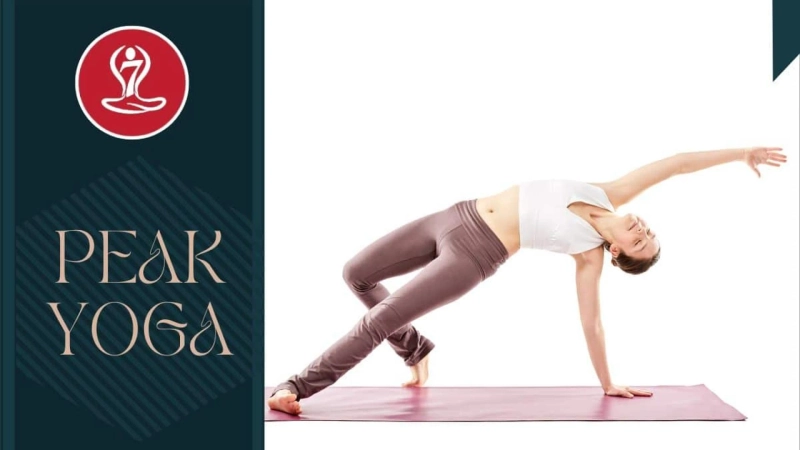Hasta Padangusthasana is a balancing pose that can take some time to develop. It is tough and takes a lot of effort with both feet to balance it in the beginning. This challenges the ability to maintain the canter of gravity on the foot.
Hasta Padangusthasana is considered a challenging pose that has starting pose of the primary series of Ashtanga Vinyasa Yoga.
This pose is very useful for mental concentration and balancing the nervous system. It is such a yoga posture that regular practice strengthens the buttocks and leg muscles, helps build strength and flexibility, and maintains physical balance.
Hasta Padangusthasana Meaning
Utthita Hasta Padangushthasana consists of four words – Utthit, Hasta, Pada, and Angushtha. Uthita means raised, Hasta means hand, pada means foot and Anushtha means toe. Its entire meaning is to raise the hands and hold the toe.
How to do Hasta Padangusthasana
- Stand in Tadasana.
- Inhale and lift your right leg and bring the knee close to the stomach.
- In this posture, there will be a strain on your right hip. Check your balance before doing the next step.
- To maintain balance, keep the attention on your left leg. Now keep your left hand on your waist. Then grab the right toe with the right hand and extend the right leg forward.
- The effort should be that the leg should be completely straight and raised as high as possible.
- Keep in mind that does it according to your ability, if the leg is not straightened, keep it bent.
- After coming into this posture, if possible, while exhaling; touch the head on the knee.
- After doing this, take five breaths in and out of this posture. Then while breathing in, lift the head. If it is not possible to touch the head at the knee, then simply tilt the head and look at the ground and take five breaths in and out and then raise the head.
- Now while keeping your eyes in front and exhaling, move your right leg outwards. If possible, rotate up to 90 degrees.
- After coming in this pose, turn the head to the left until your vision comes over the left shoulder. In total, breathe in and out five times so that you can stay in the asana for 30 to 60 seconds.
- Gradually, as the strength and flexibility in your body start increasing, you can increase the time, do not exceed 90 seconds.
- You can come out of this pose after 5 breaths. To get out of the asana, while breathing in, bring the head back towards the front, and then the right leg as well.
- Once again rest the head on the knee and bring it back up, this time do not breathe five times.
- Keep the right hand also on the waist, but keep the right leg raised, breathe in and out five times in this posture.
- To end the asana, lower the right leg, lower both hands, and end in Tadasana. After doing the right side, do all these steps on the left side as well.
Practice Duration:
This pose is simple in appearance, but it may be a bit difficult for a new practitioner in the beginning. So stay in the last position for a minute.
But for those who cannot stay in the final position for a long time, such people repeat this exercise five times with each leg.
Hasta Padangusthasana for Beginners
Utthit Hasta Padangusthasana is a slightly difficult posture, for beginners, the simple way to do it is given below.
- Stand on the ground keeping both the feet together and keep the palms on the waist.
- You can take the support of the wall to stand.
- Bend your right leg from the knee and hold the toe of the foot with the right hand and straighten the leg in front, if you have difficulty in straightening the leg, then you take a cloth or scarf and tie it on the paw and hand the belt.
- Your feet should be at 90 degrees. In this position, you can also keep your feet on the chair.
- Stay in this position for 30 seconds or as per your capacity.
- Now repeat this process from the left side.
Hasta Padangusthasana Health Benefits
Strengthen feet and ankles
Utthita Hasta Padangusthasana is a balancing posture, when you do it, you feel a stretch in the muscles of your arms and legs. Due to this all the parts of the body such as the knee joint, the muscles of the feet, and ankles also get strength.
Muscles Get Stronger
Due to keeping the leg raised, a stretch is created between both legs. This stretch balances and strengthens the muscles. Also experiences pain and strain in the hamstrings (a special nerve at the back of the knee). These stretches strengthen and strengthen every part of the person doing Utthi Hasta Padangusthasana over a long period of time.
Buttocks or hips muscles strengthen
Utthita Hasta Padangusthasana is a great asana to strengthen the muscles of the buttocks. This asana strengthens the muscles of the hips and helps in better circulation of blood in the buttocks.
Balancing Pose
As we have talked about earlier, this is a balancing posture. Due to standing on one leg, Hasta Padangusthasana improves the balance of the body.
Other Health Benefits:
- Boost energy and fight fatigue
- Torso mobility and expansion
- The good Hip opening exercise
- Postural and body awareness
- Helps to Reduce Back Pain
Precautions
- If you have any kind of pain in your lower back, ankle, or muscles, then does not practice this yoga asana.
- Do not practice if there is a pain in the legs.
- While doing Hasta Padangusthasana, raise the legs according to your ability.
Do not push beyond your physical capacity.



